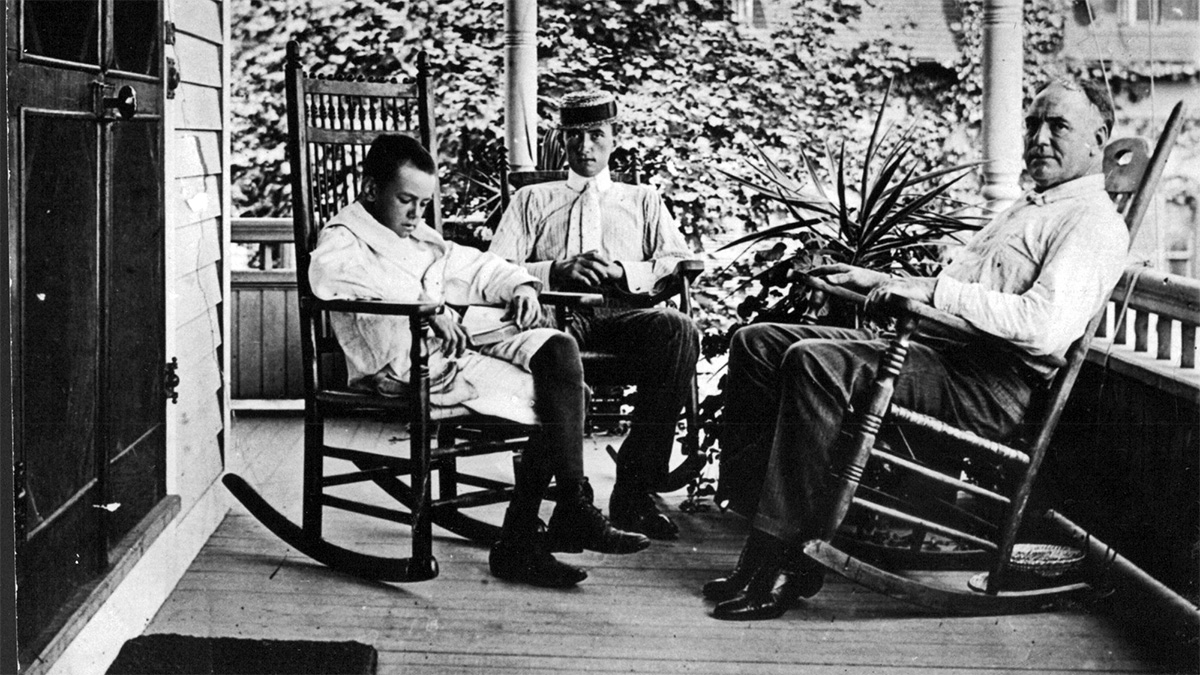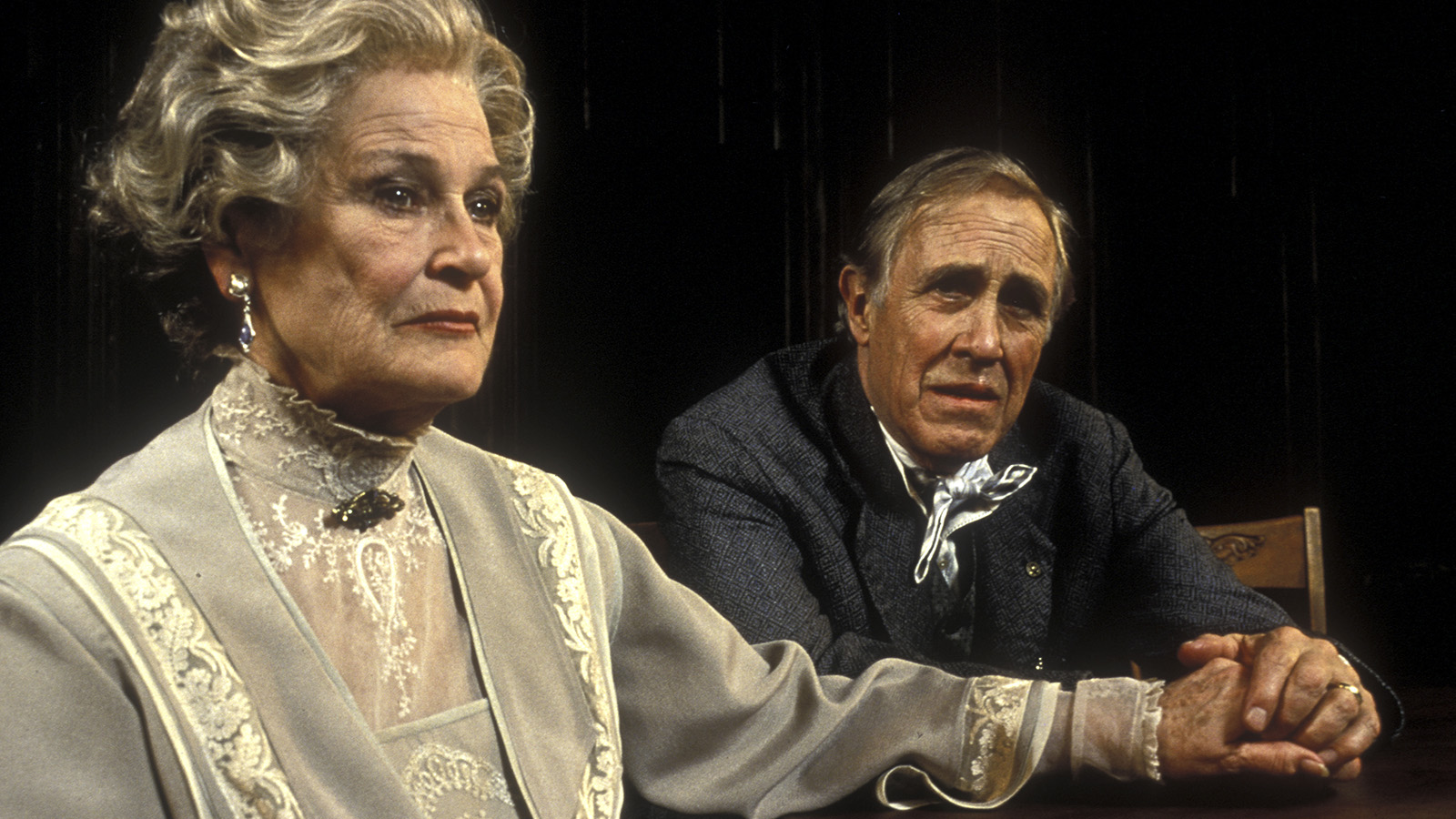By Katerina Taxiaropoulou,
“None of us can help the things life has done to us. They’re done before you realize it, and once they’re done, they make you do other things until at last everything comes between you and what you’d like to be, and you’ve lost your true self forever.”
― Eugene O’Neill, quote from Long Day’s Journey into Night
The clock strikes 8.30, on a warm August day, in 1912. As sunlight slips through the windows of the Monte Cristo Cottage, the four members of the Tyrone family make their appearance. James Tyrone, the father, at 65 years of age but looking fairly younger, stands broad-shouldered and deep-chested in the middle of the living room. Having spent years as a travelling actor playing the same role, he now looks somewhat tired and miserly. On the chair, at the right, sits his older son, Jamie, a 33 year-old man with thinning hair and a habitual sneer on his face. He is an actor too. Edmund, the youngest child, at only 23, appears older than his brother, walking across the room all gaunt and sunken-cheeked. As we later learn, he used to work as a navy merchant and caught tuberculosis aboard. Finally, Mary Cavan Tyrone enters the stage, a 54 year-old woman with a distinctively Irish face. Her thick white hair is perfectly coifed and her eyes seem rather glazed. That is due to her morphine addiction, a topic which is constantly hinted at by the men of the house.
Long Day’s Journey into Night was written by American playwright Eugene O’ Neill, between 1939 and 1941, but first published posthumously in 1956. The story unfolds in four acts and all action takes place on a single day, from morning to night, hence the title. According to Renee Calarco, this is a highly “autobiographical play”, as the “dysfunctional household” it depicts is “based on O’ Neill’s immediate family during his early years” (The Kennedy Center). Vain and mean, James Tyrone is thought to represent the playwright’s father, while Mary Tyrone is claimed to portray his own morphine addict mother. Alcoholic and irascible, Jamie is inspired by O’ Neill’s older brother, while sickly and morbidly poetic Edmund embodies the writer himself. In a note to his wife, Carlotta, Eugene O’ Neill describes Long Day’s Journey into Night as a “play of old sorrow, written in tears and blood”, thus revealing his connection to the story (Yale University Press).

Yet, beyond the microcosm of the playwright’s personal experience lies a universal matter that deeply touches all audiences: family trauma. According to Riley Hurst Brubaker, family trauma is an event that causes “significant psychological, physical or emotional harm” and affects “an entire family”, passed through generations (Transformations Care Network). However, although it shakes a family unit, “each individual may experience their trauma differently”. With a remarkable amount of emotional honesty, Eugene O’ Neill unlocks his memory of past and present pain, offering us a picture of human “facing life, fighting against the eternal odds, not conquering but perhaps inevitably being conquered” (The Kennedy Center).
1. The Parents

James and Mary Tyrone were rather an unfortunate match. They met at a young age and fell madly in love with each other. However, they wanted different things from life. James was an ambitious actor and desired to travel around the world to establish his career. In contrast, Mary was not so fond of art and all she wished was to build a stable home. What triggers their conflict is the fact that they “blame each other for their failures” (The Kennedy Center). James wanted to become a classical actor with a wide scope of roles in his biography, but claims that he sacrificed his dream when he bought a shallow yet profitable vehicle play to provide for his family. Mary keeps reminiscing her convent days and is inclined to believe that she missed her calling to become a nun by marrying James.
However, the heaviest accusation Mary throws on her husband is her addiction to morphine. Following the birth of her youngest son, Edmund, Mary suffered great pain. Tyrone refused to pay for a good doctor to treat her and instead found a quack doctor who would only give her painkillers, leading to her developing an addiction. At the beginning of the play, her husband and sons comment on how well she looks, having just returned from the sanatorium where she retreated to recover from her addiction. As the day progresses though and she senses her son’s ill health, she relapses. Her family notices that and she is “very much aware of their constant scrutiny”, as well as suspicious, a fact that makes her struggle even harder (Variety). Her futile effort to deny reality and go back to her past innocence only drives her to a drug-laden crisis as night settles in.
Witnessing his wife slipping back into self-destruction, James does not try to confront her, but rather choses the same fate for himself. Moving away from Mary, he goes to find some liquor and gulps it down. It is easier for him to get drunk than to openly tell his wife that she is an addict and that her son is dying from tuberculosis. Yet, a necessary step towards healing is to “recognize and acknowledge the traumatic experience” and “seek proper support” (Transformations Care Network).
Living in denial of their problems, this couple keeps hurting each other and by extension their children. The audience, however, cannot dislike them as selfish and despicable individuals. O’ Neill’s characters are “so profoundly pathetic, seemingly helpless in their inability to control their own weaknesses” that people cannot but sympathize with them (Yale University Press). And as ‘the sins of the father are visited upon the son’, Jamie and Edmund are the ones to pick up the torch of immense loving as well as suffering.
References
- LONG DAY’S JOURNEY INTO NIGHT. faculty.webster.edu. Available here
- Eugene O’Neill + Long Day’s Journey into Night. kennedy-center.org. Available here
- How to Heal from Family Trauma. transformationsnetwork.com. Available here
- Broadway Review: ‘Long Day’s Journey into Night’ with Jessica Lange, Gabriel Byrne, Michael Shannon”. variety.com. Available here




